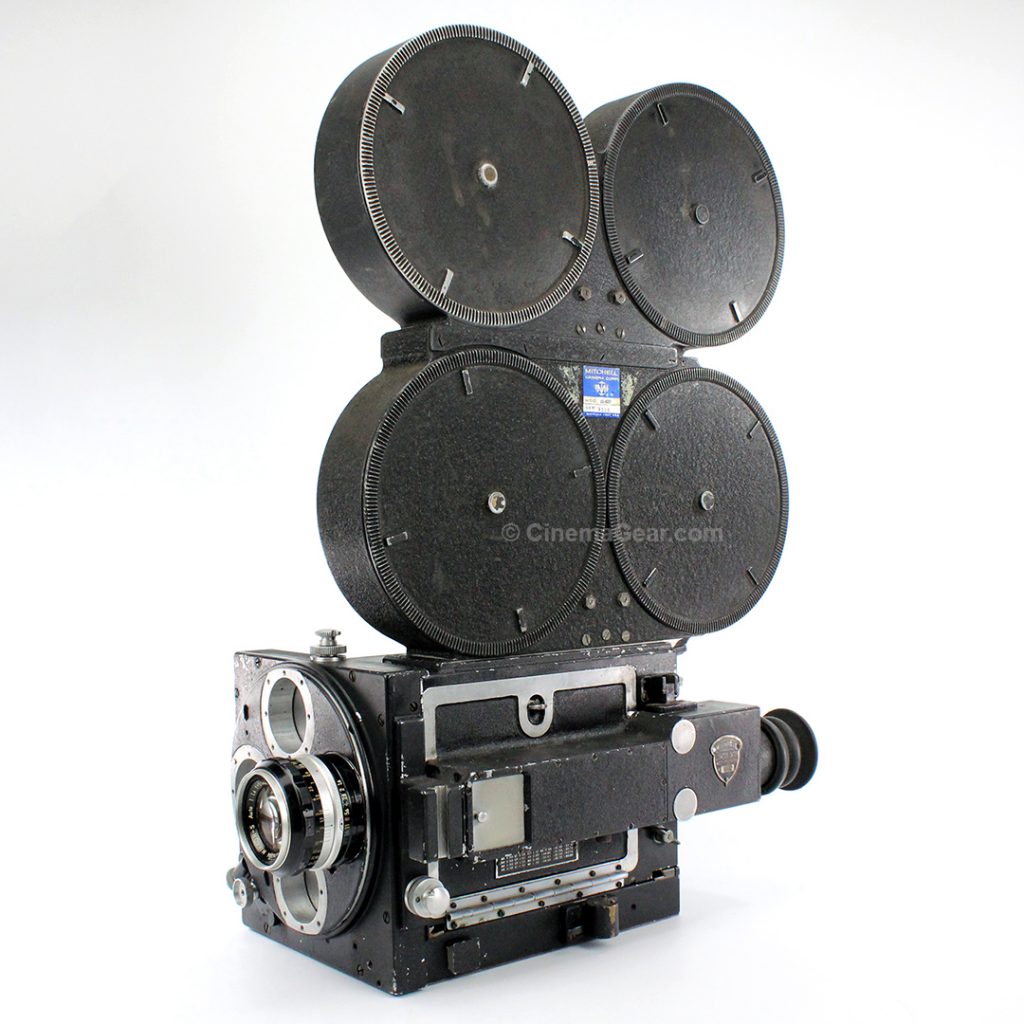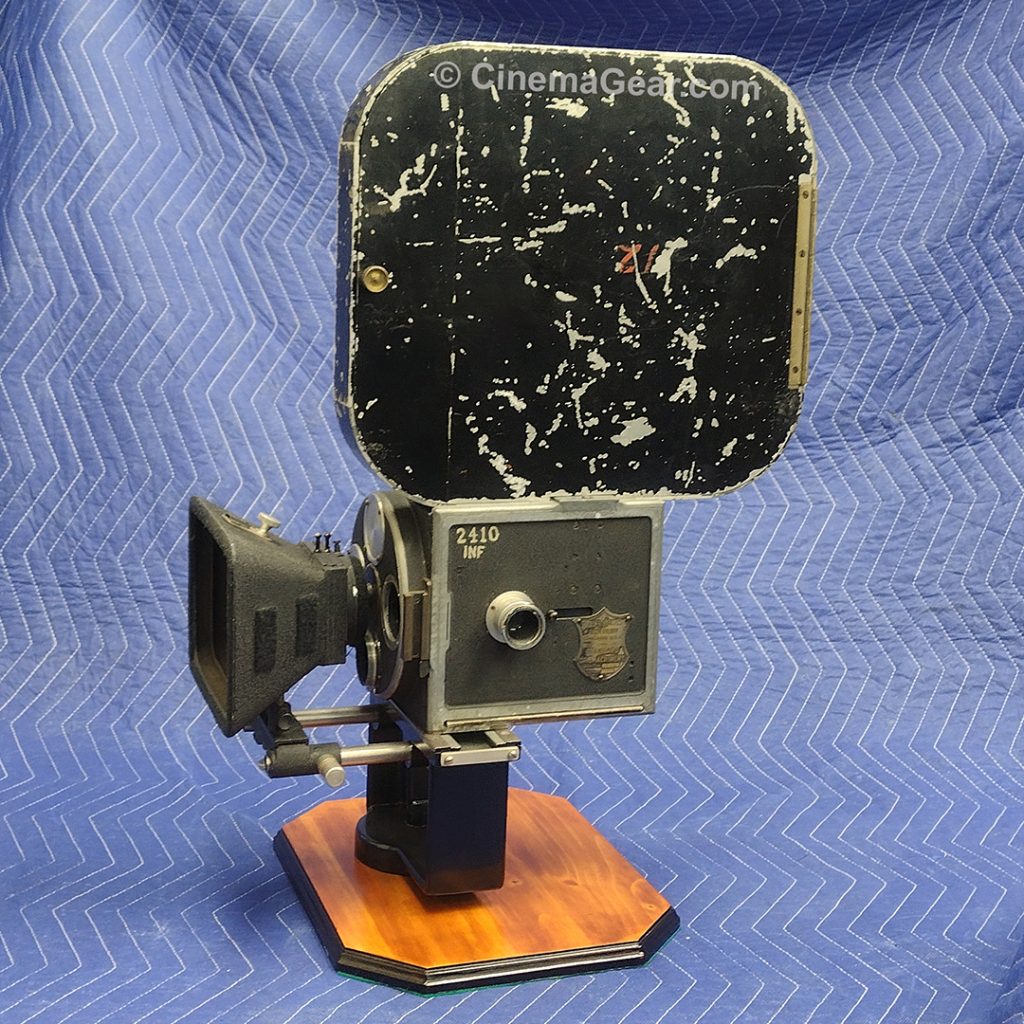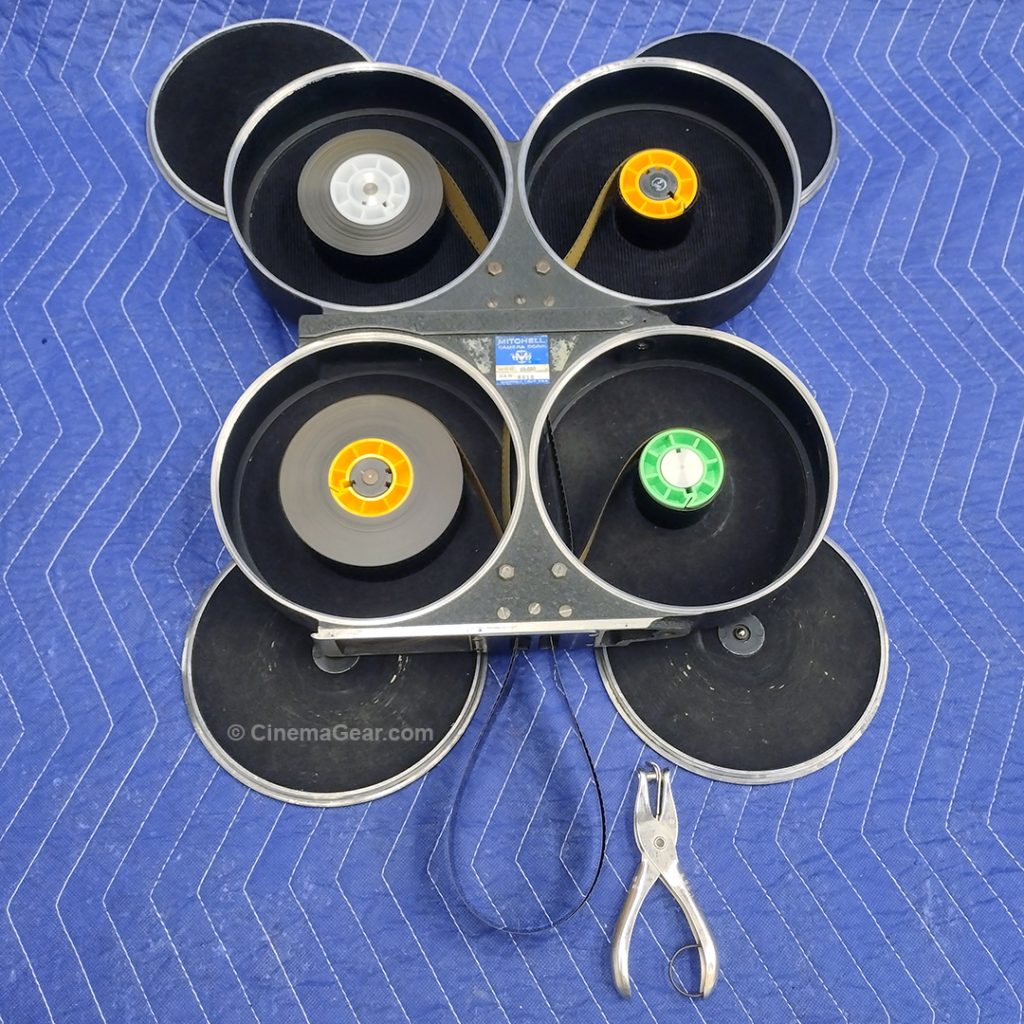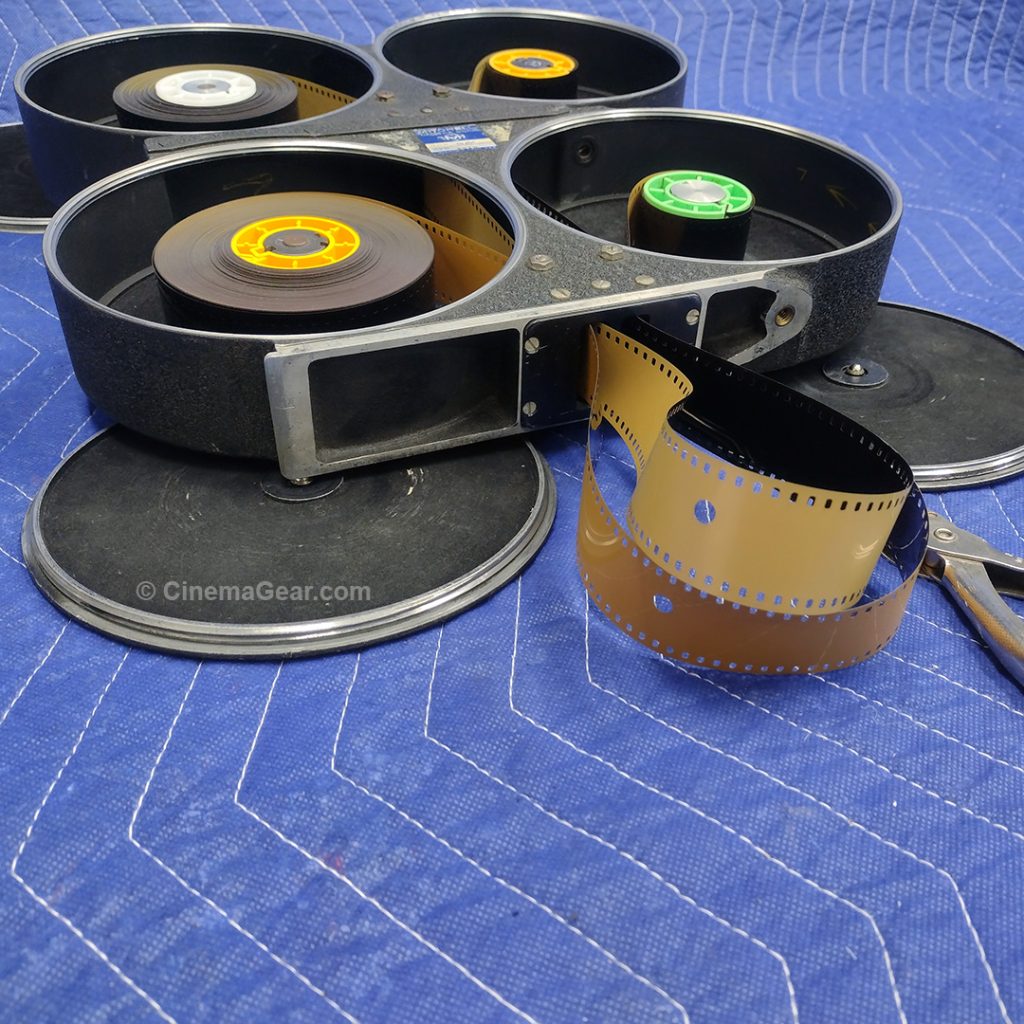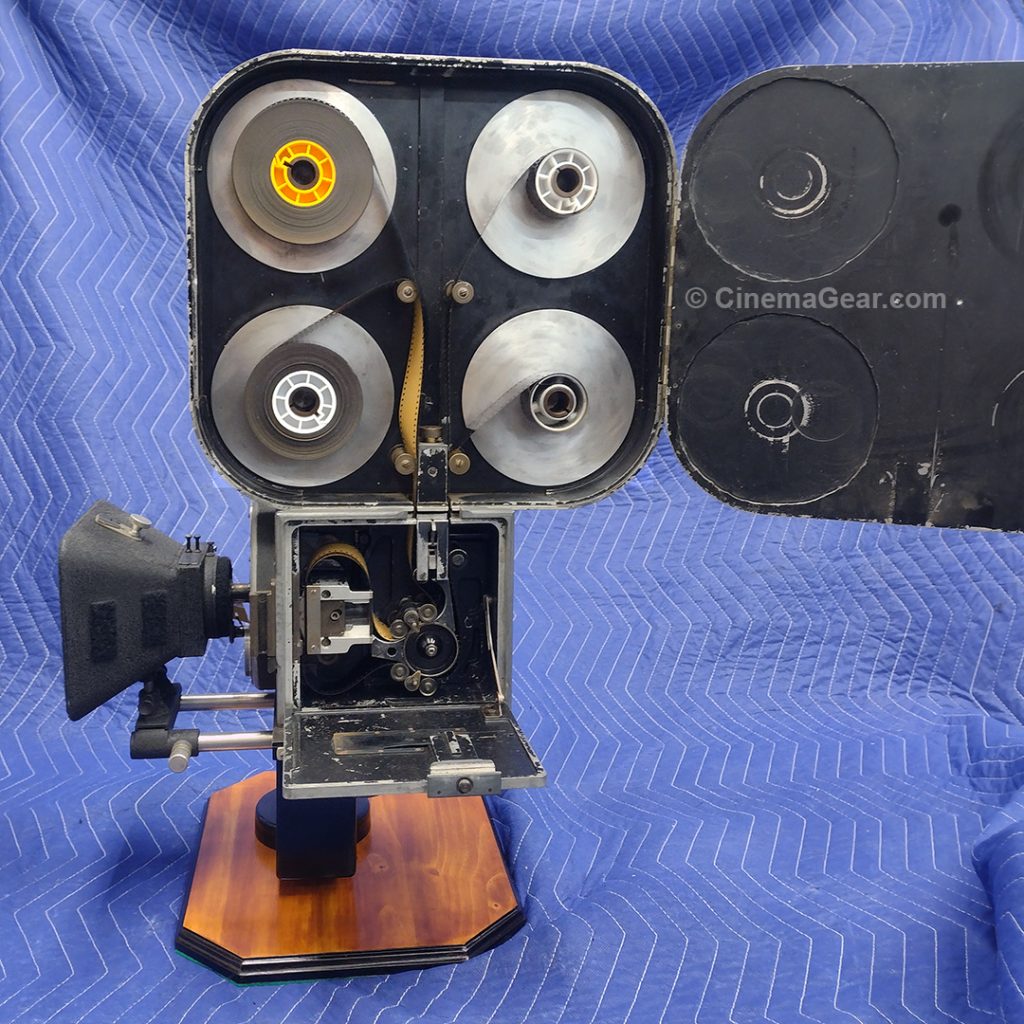A number of people were curious about threading a bipack magazine. Those of you that have done this will know that it is not as straightforward as one might think. I don’t know if this is the best or only way to thread a bipack magazine, but this is the way I have done it the few times I shot with a bipack mag. The object of the shots that I was doing was to place a moving object against a city background, so 2 mattes had to be created. The first matte was used to keep the area where the moving object was to go on the composite from being exposed. The second matte was to protect the background image from being contaminated when the moving object was added to the composite. First the bipack mag was loaded with unexposed film sandwiched with the hold out matte so that we could photograph the cityscape without exposing the area where the moving object was to go. The camera was then taken to the location where the background material was photographed. Later, using an optical printer, the moving object was added to the composite.
To load the bi-pack magazine you put the 2 pieces of film, raw stock and matte, in the magazine so the matte covers the raw stock and acts to keep the area that is not yet to be exposed, unexposed. The pictures show 2 examples of bipack magazines, one the classic Mitchell bipack, and the other bipack (mounted to a Bell & Howell 2709) I believe came from MGM, though I am not certain of that. Take a look at our schematic (image 3). In the darkroom, raw stock is loaded into compartment A and threaded down into compartment C, then compartment A is closed. Now with the lights on, the matte is loaded into compartment C, making sure there is enough leader on the matte to be able to thread the matte through the camera to its takeup point. The matte and the raw stock, sandwiched together, are now threaded through the light trap, leaving a loop large enough to thread the camera. Then, the matte is taken up in compartment D and the raw stock is taken up in compartment B. All the chambers of the magazine are now closed and made light tight. The last step is then to thread this into the camera and make a punch mark through both pieces of film so line up can be done later. There are several other styles of bipack magazine out there, I have just shown 2 examples here.


